Well, it’s the end of 2010, and since my garden is in a rather dreary state of dormancy, and the dogs are doing their annual running amok in the cooler temperatures and wreaking havoc on the entire backyard, I thought I’d end the year with some fun with my new close-up filters and a spider species new to my yard. The close-up filters are an inexpensive way to get a bit of a macro effect without breaking the bank on a new lens.
I found this little lady on a web outside my bedroom window.
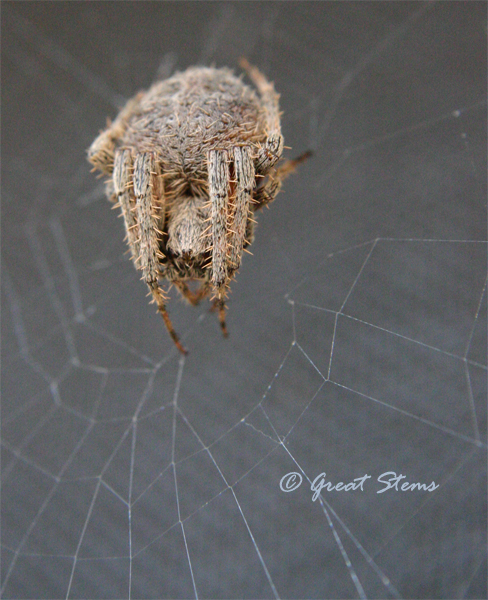 I believe she is a Neoscona crucifera, also known as a Hentz Orbweaver. They seem to be fairly common in central Texas — a lot of the online photos I found came from this region. I can’t help but stare at her hairiness. She might not win the hairiest spider award, but she’s right up there in my book.
I believe she is a Neoscona crucifera, also known as a Hentz Orbweaver. They seem to be fairly common in central Texas — a lot of the online photos I found came from this region. I can’t help but stare at her hairiness. She might not win the hairiest spider award, but she’s right up there in my book.
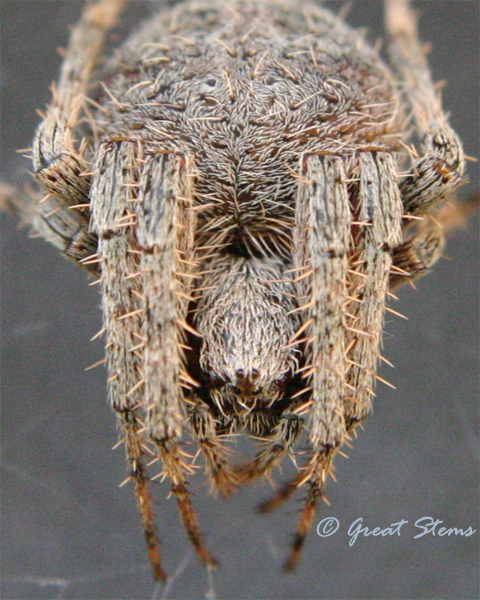 It was utterly fascinating watching her go after one of my pest bugs. How on earth did that bug just happen to end up in the web while I stood nearby with my camera? Remarkable timing, right? I know!
It was utterly fascinating watching her go after one of my pest bugs. How on earth did that bug just happen to end up in the web while I stood nearby with my camera? Remarkable timing, right? I know!
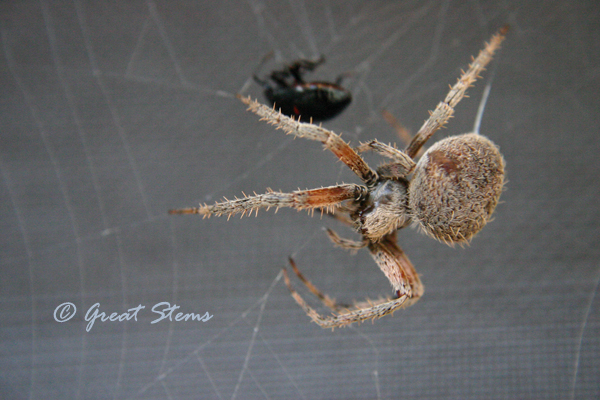
So here’s what I observed. First, Mrs. Spider ran over fast and paralyzed the bug — she was so fast I didn’t witness the bite, but in a fraction of a second, the bug went from squirming to still.
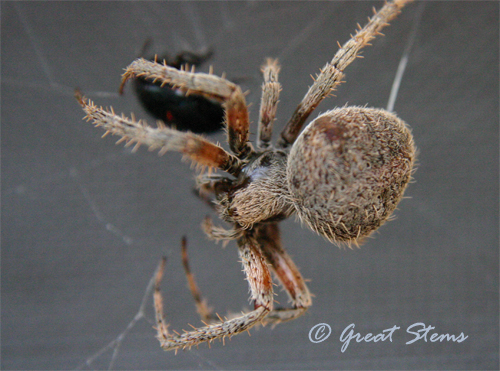 Then Mrs. Spider made a hole in her web. I’m not sure the purpose of this — did she use the web strands on her prey? Did she remove them in preparation for easy spinning of the bug? If I were to guess, she moved the sticky threads out of her way. Notice that while she was doing this, her spinnerets began producing more silk.
Then Mrs. Spider made a hole in her web. I’m not sure the purpose of this — did she use the web strands on her prey? Did she remove them in preparation for easy spinning of the bug? If I were to guess, she moved the sticky threads out of her way. Notice that while she was doing this, her spinnerets began producing more silk.
And then the spider simultaneously began maneuvering the paralyzed bug and wrapping it in a widened sheath of silk.
 I watched in astonishment as the spider expertly swayed her abdomen side to side to thoroughly guide the silk over all parts of the bug. A true weaver at work! Look closely:
I watched in astonishment as the spider expertly swayed her abdomen side to side to thoroughly guide the silk over all parts of the bug. A true weaver at work! Look closely:
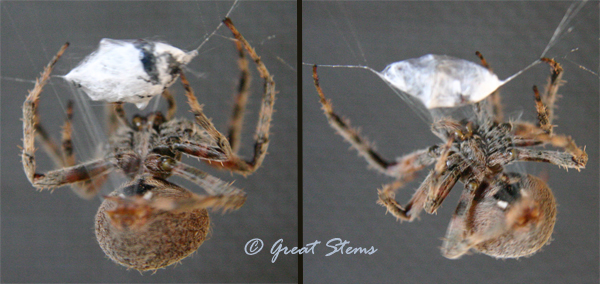
During the process, the spider paused and extended her fang into the body. I assume that at this point she is injecting the prey with digestive enzymes to liquify the bug’s insides. Perhaps she was already feasting. Anyone want to ask her?
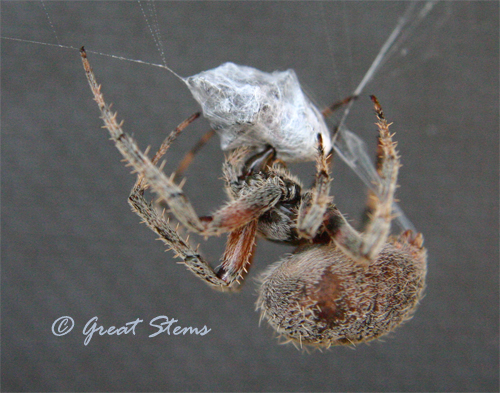 Then she went back to wrapping up the bug some more.
Then she went back to wrapping up the bug some more.
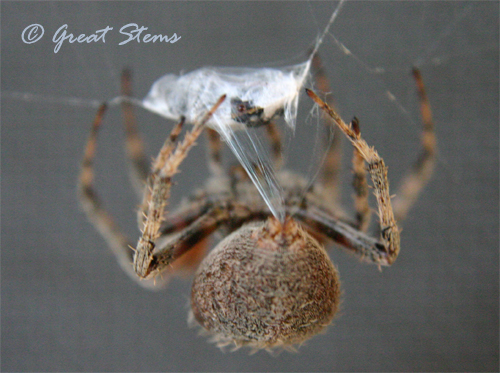
Once the spider was content with her packaging job, she slid the wrapped bug over to a new spot and secured it. The move was amazingly smooth.
I was curious whether the spider would be interested in a second bug or just ignore it. She was interested, that’s for sure! She zoomed across the web to start the process anew.
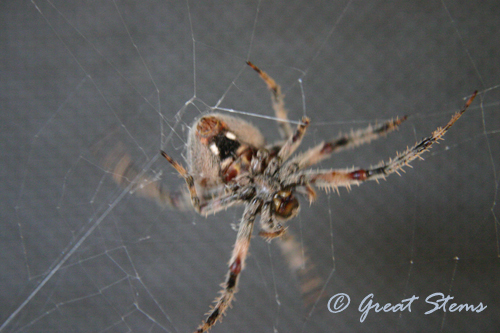
Here’s a sequence of shots from her second kill — she was kind enough to give me the view from the front this time.
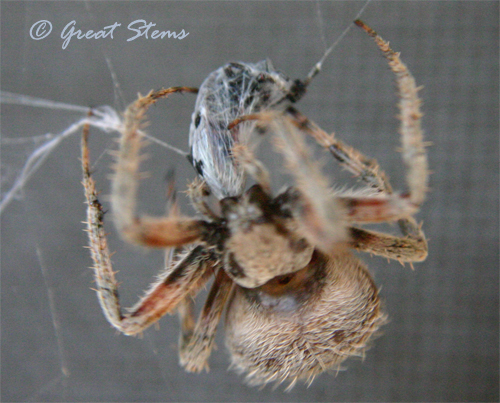
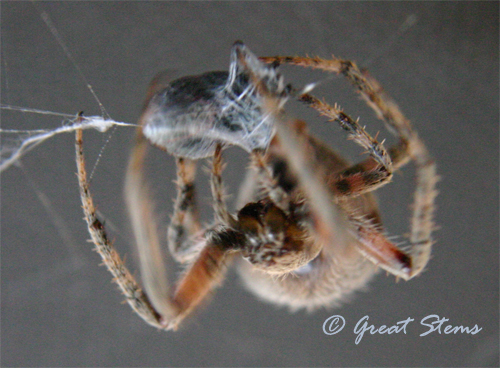
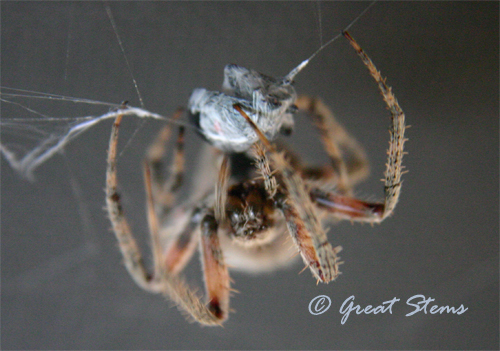
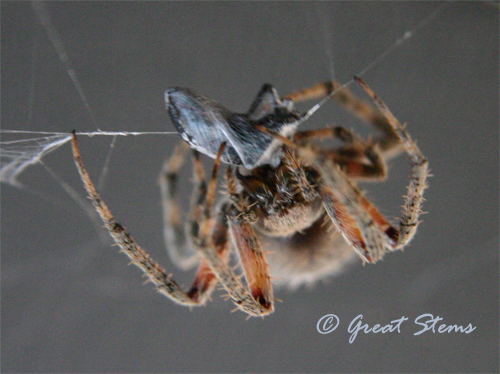
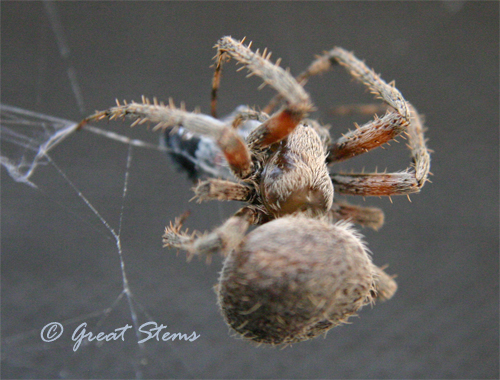
It was really challenging to get shots that were in focus — between the spider’s busy movements and the wind, the web bounced quite a bit. I think this is a downside to the close-up filters — they don’t seem to handle movement well. Still, they are fun to play with!
I assume that this spider will lay her eggs soon — juveniles tend to be nocturnal, and this adult was quite central on her web during the day, mostly likely getting additional nutrients for that final project. I’ll have to keep a lookout for babies!
Happy New Year, everyone! I’m so glad for all my gardening, wildlife, and blog friends. 2010 has been such a great year — I can’t wait to see what 2011 will bring. Apparently it will at least bring spider babies!